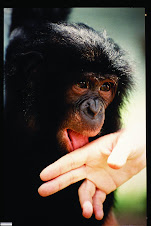
 This old map (someone wrote "1956" on it) was of the city I knew as Kinshasa, Zaire. The country was called the Belgian Congo and the city was then Leopoldville. It is still Kinshasa today, but the country was renamed the Democratic Republic of the Congo in 1997, after a military coup.
This old map (someone wrote "1956" on it) was of the city I knew as Kinshasa, Zaire. The country was called the Belgian Congo and the city was then Leopoldville. It is still Kinshasa today, but the country was renamed the Democratic Republic of the Congo in 1997, after a military coup.The top image of the map is of the west (towards the Atlantic ocean) and the bottom is the eastern portion, including the downtown and the ports along the Congo River (seen as the grey area labeled Fleuve Congo) . The term used for the outlining shantytowns was cite indigene and this is the origin for the word cite,with an accent on the "e." All of the terrain that was blank on the map in the '50s is now occupied by the slums that stretch for miles and miles past the original borders of Kinshasa.
One landmark seen in the middle right section of the bottom map is the small airport called Sabena (for the Belgian airline). This is now the Ndolo airport which has small aircraft and cargo planes. This was also the scene of one of the most disastrous airline accidents ever, in January, 1996. On take-off, an overloaded Russian Antonov overshot the runway and plowed into a nearby market, killing roughly 300 people.
















